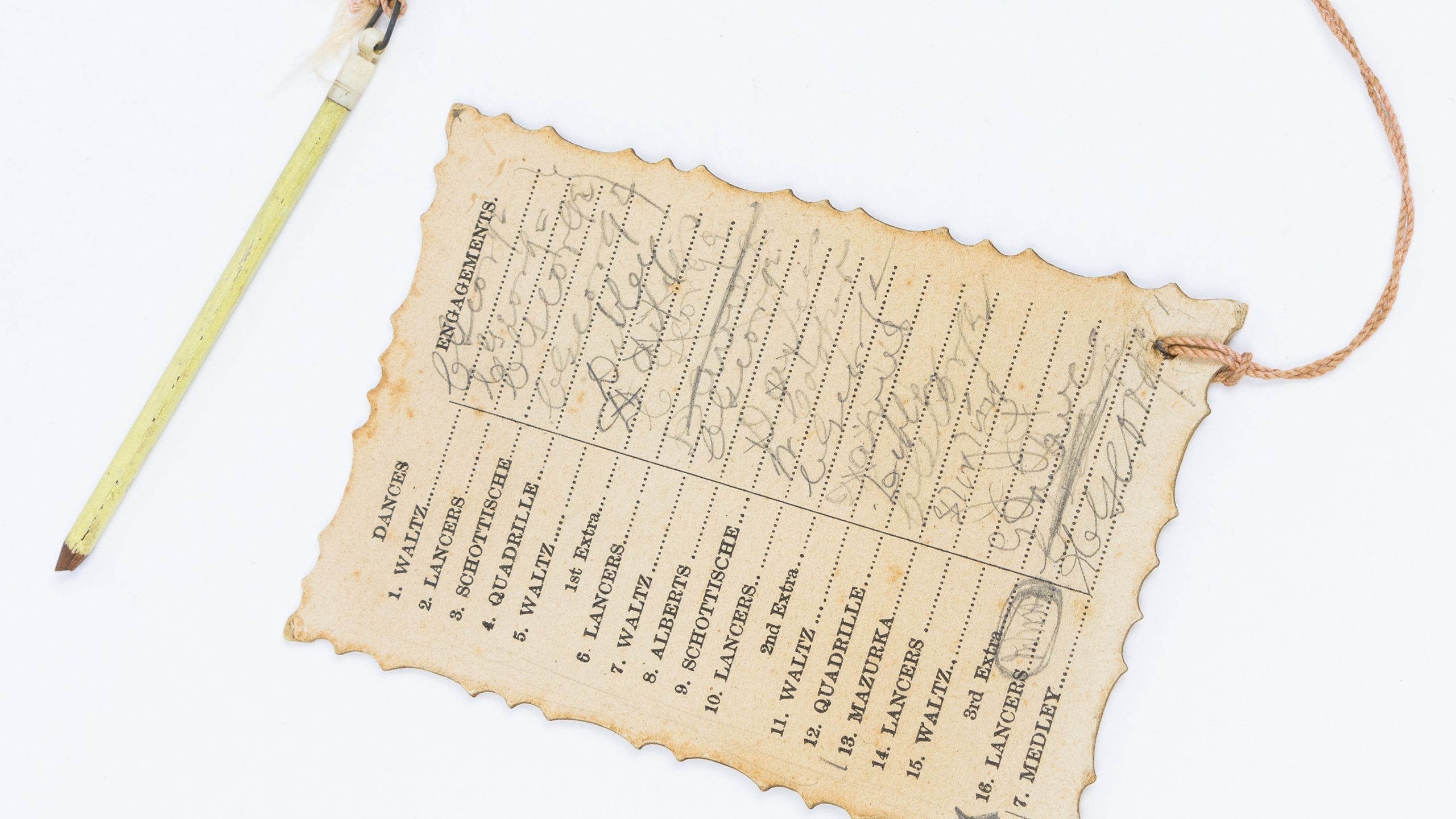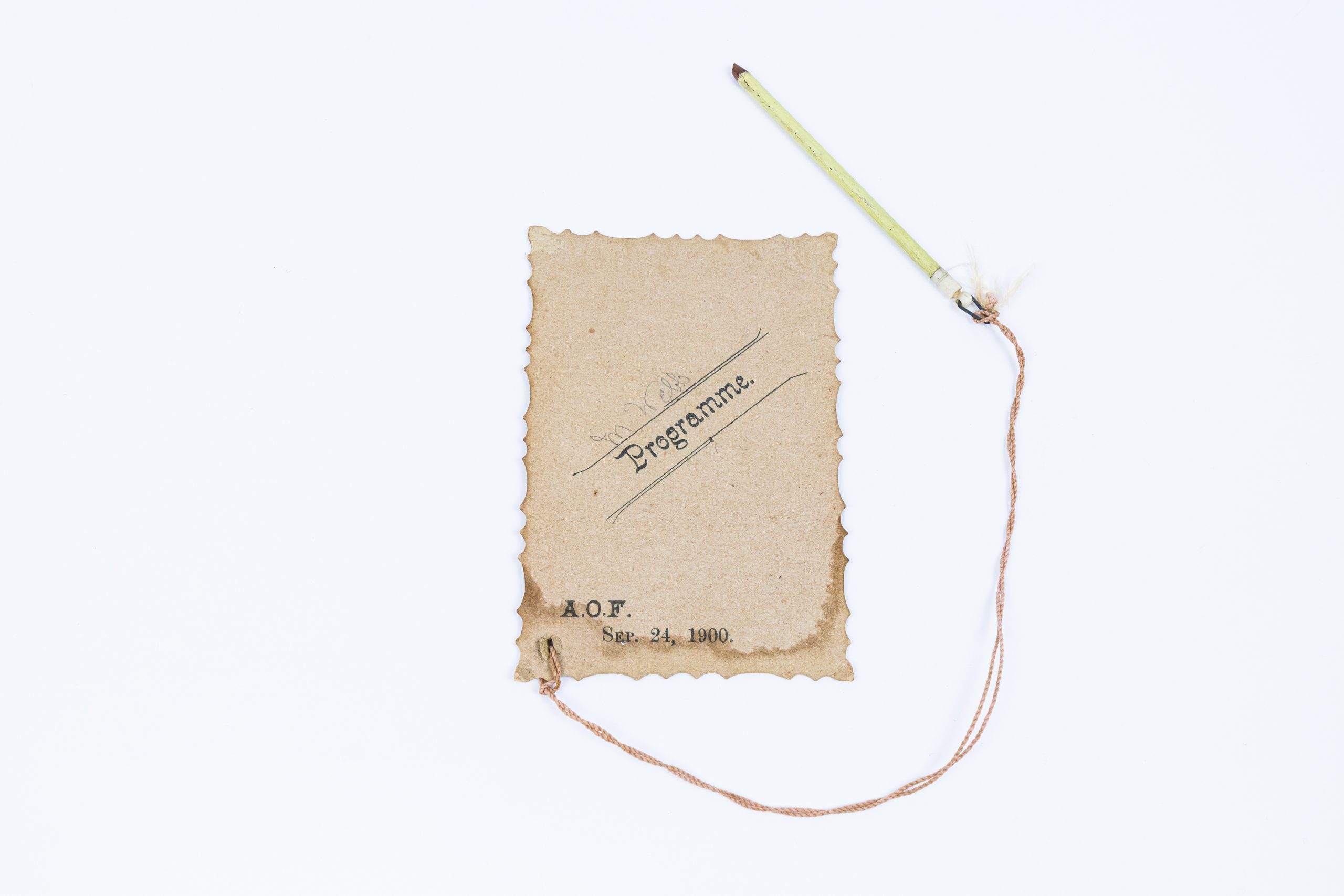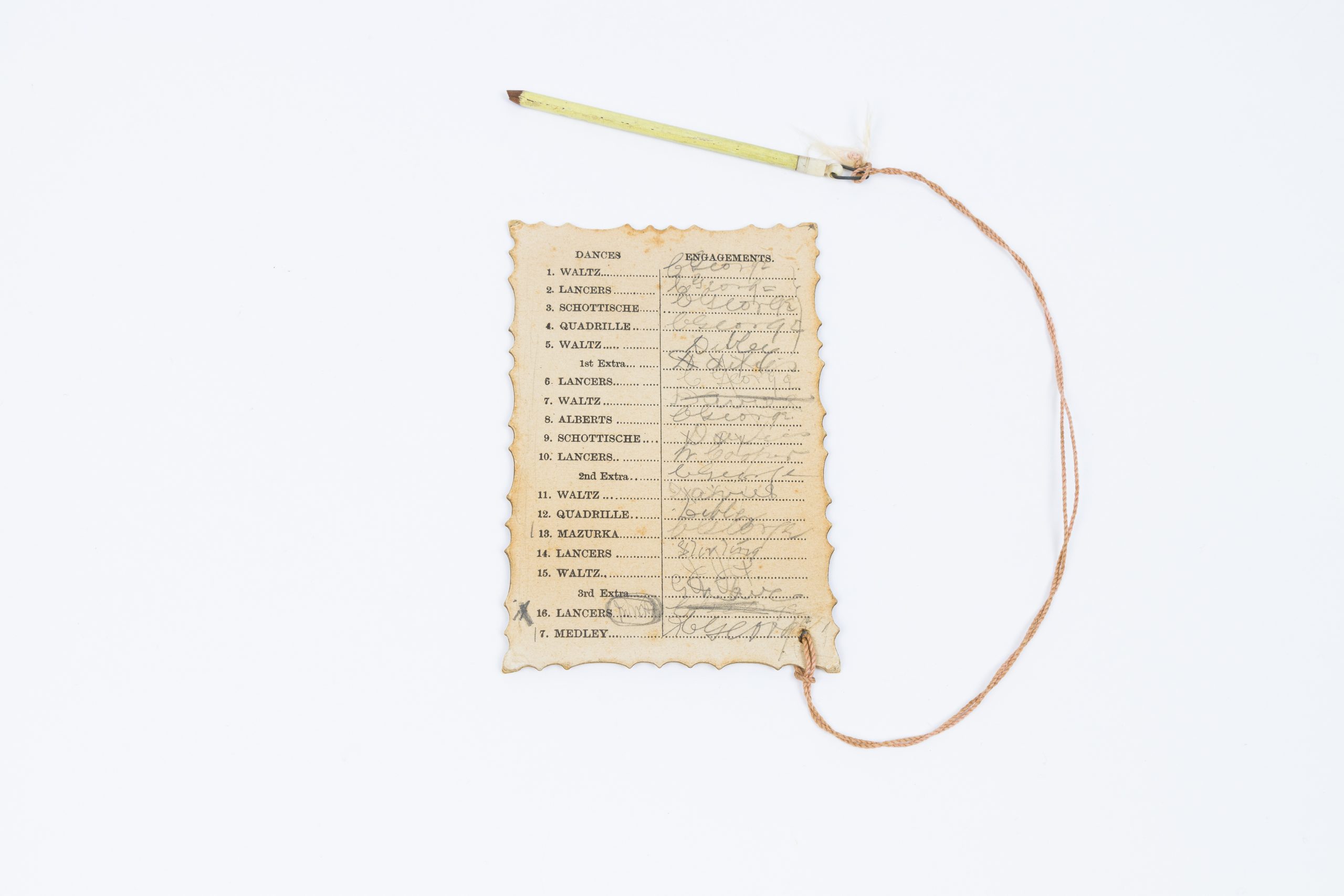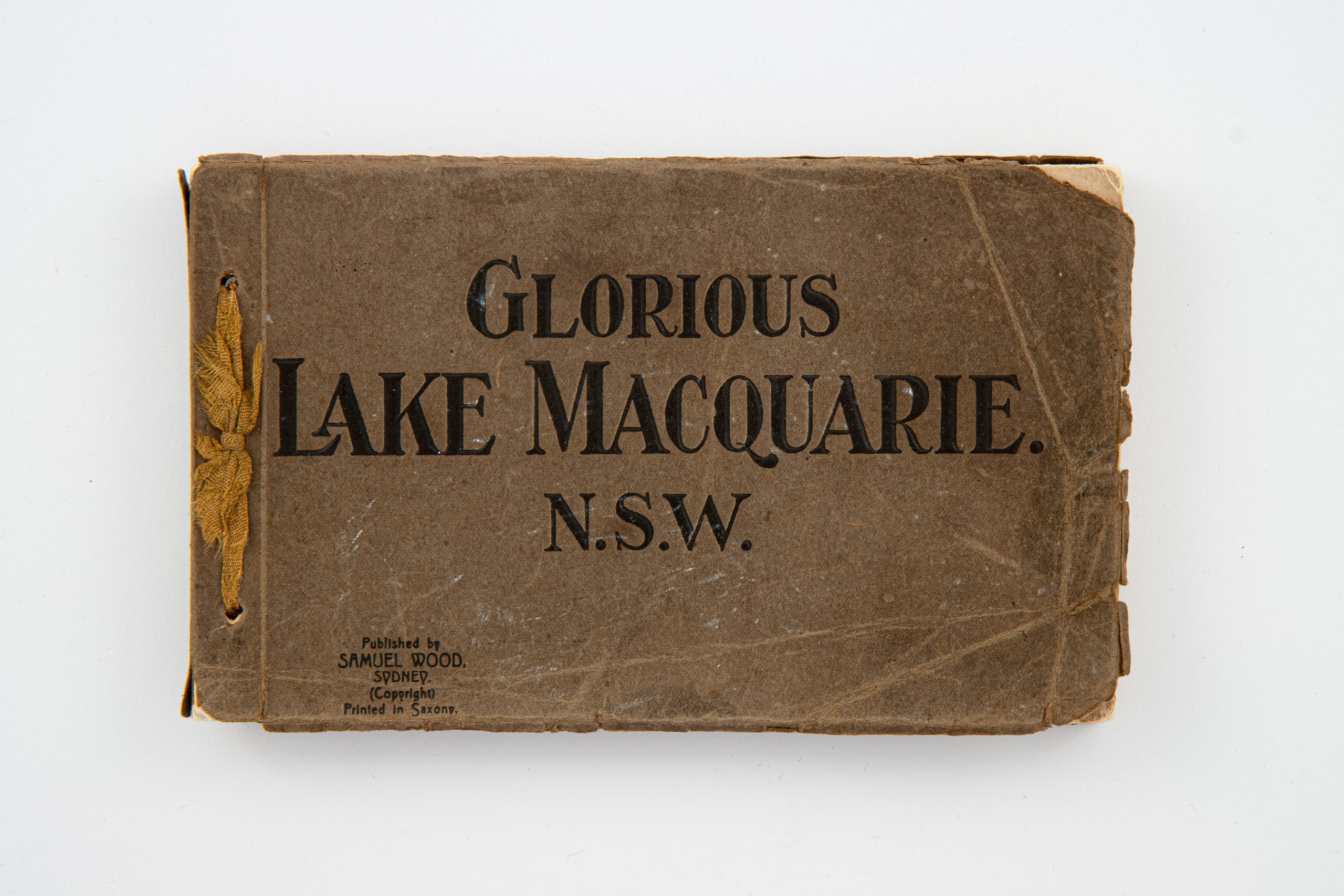Save the Last Dance for Me
Miss Webb’s Persistent Suitor
This dance card was used by a Miss M. Webb at an event held by the Ancient Order of Foresters (A.O.F.) in September 1900. The A.O.F. was founded as the Royal Foresters at Knaresborough Castle in North Yorkshire, England in 1745 and exported to Australia in 1840 when the first ‘Court’ (chapter) was established in Sydney. By the 1880s, there were 19 A.O.F. Courts in New South Wales. The purpose of the organisation was as a mutual support network for its members who were required to pay dues and attend meetings but in exchange could receive financial support in the event of illness or injury. It was one of several fraternal organisations which evolved into today’s insurance companies.
It is not known which Foresters Court organised this dance or where it was held, but it was likely in the Hunter or Sydney region.
Miss Webb used this card to record the names of young men that wished to dance with her that evening. By using a dance card she prevented the terrible possibility of double-booking herself with two different suitors. There were accepted rules in the use of a dance card. If a young man invited Miss Webb to dance, she was compelled to accept unless already engaged for that dance. Refusing with any other excuse (such as fatigue) could cause serious offence to the gentleman. If she accepted an offer, she passed the dance card to the suitor and he would write in his name, using the small pencil attached. A key objective of a dance was for young people to mingle, so it was frowned upon for a couple to share more than six dances together.
At least one of these rules was stretched on that Spring evening. The name ‘C. George’ appears on the dance card nine times including in the most coveted slot—the last dance of the evening. It is tempting to wonder…was this attention a dream come true for Miss Webb, or was Mr. George an annoyingly persistent suitor?






